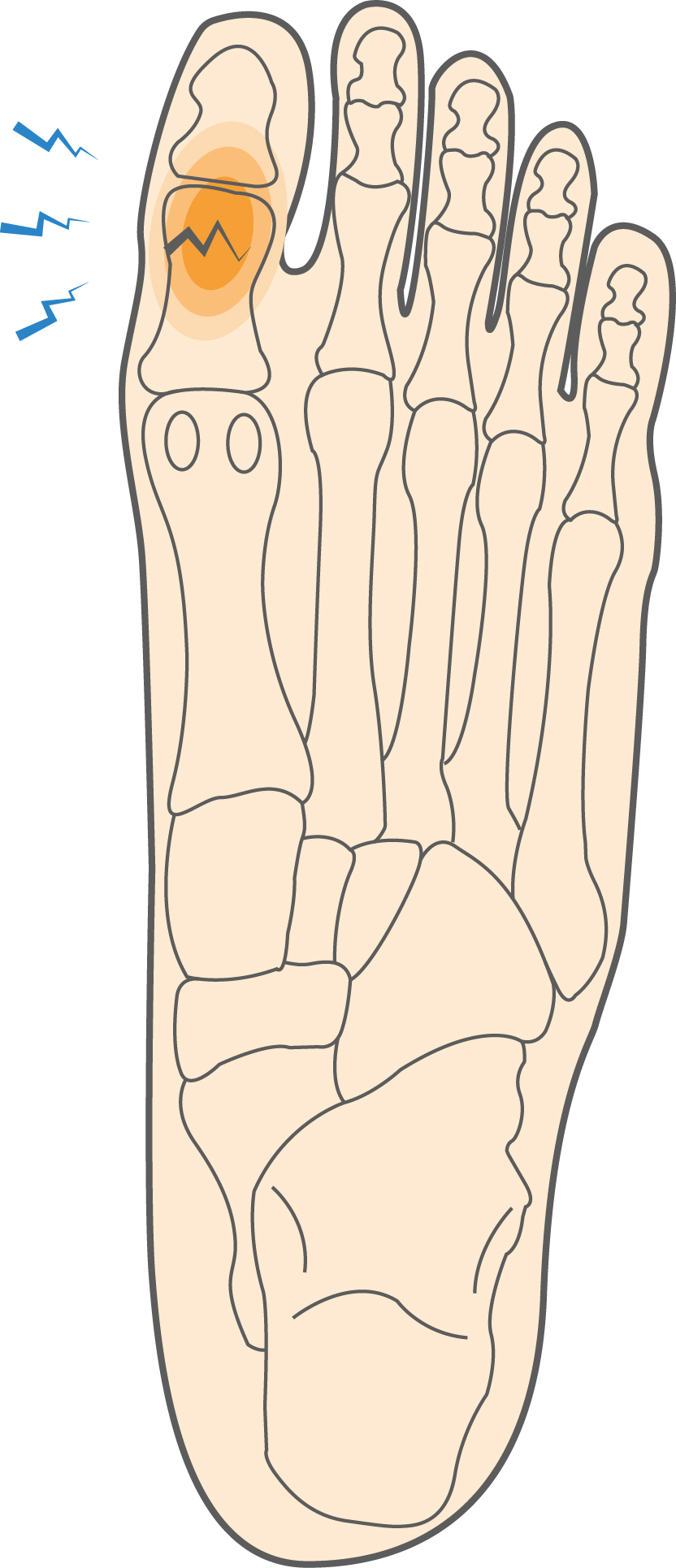Toe injuries are relatively common, with the great toe being the most often injured toe. The great toe, also called the big toe or hallux, is made up of two phalanges, as opposed to the other toes, which each have three. These work together with the five metatarsal bones in the foot while walking, running, or in movement.A fracture in the phalanges of the great toe can be painful, but most instances of great toe fractures do not require surgery and can be healed through simple rest. However, some cases will require greater attention and possibly surgical intervention. If not treated, a great toe fracture can lead to long-term consequences.
Great Toe Fracture Causes, Symptoms & Treatment Options
Toe injuries are relatively common, with the great toe being the most often injured toe. The great toe, also called the big toe or hallux, is made up of two phalanges, as opposed to the other toes, which each have three. These work together with the five metatarsal bones in the foot while walking, running, or in movement. A fracture in the phalanges of the great toe can be painful, but most instances of great toe fractures do not require surgery and can be healed through simple rest. However, some cases will require greater attention and possibly surgical intervention. If not treated, a great toe fracture can lead to long-term consequences.
Overview
Overview

What causes Great Toe Fracture?
A great toe fracture is usually caused by trauma to the toe, such as stubbing the big toe or dropping a heavy object on it. It is common in many sports, especially those involving high-impact activity on the feet, such as sprinting, kicking, or jumping.
Hairline fractures called ‘stress fractures’ can also develop from repetitive activity that impacts the toe, rather than a single high-impact incident. These can manifest long after the activity has ceased, sometimes accompanied by symptoms like toe bruising or mild pain.
Great toe fracture is most common in these sports:
- Football
- Dance
- Basketball
- Running
- Gymnastics
- Soccer
- Martial arts
Symptoms
The most common signs of a great toe fracture include:
- Pain
- Swelling
- Deformity (including bruising and discoloration)
- Difficulty walking
When to see a doctor
Contact your physician if the toe is very swollen or deformed, if you experience pain for more than a few days, or if you have trouble walking normally or wearing shoes. In order to make a diagnosis, your doctor may prescribe the following imaging tests:
- X-Ray
- CT Scan
- Ultrasound
Non-operative treatment
Most great toe fractures can be treated non-operatively at home, for example, with rest, buddy taping the toes together, applying ice, and elevation. Note that you should not apply ice for more than 20 minutes at a time.
Supportive footwear such as an open-toe shoe or wider-than-usual shoe can also be employed. Painkillers and anti-inflammatories can help relieve discomfort and swelling.
Surgical Treatment
Toe injuries are relatively common, with the great toe being the most often injured. The great toe, also called the big toe or hallux, comprises two phalanges, as opposed to the other toes, each having three. These work with the five metatarsal bones in the foot while walking, running, or moving. A hallux fracture in the phalanges of the great toe can be painful, but most big toe fractures do not require surgery and can be healed through simple rest. However, some cases will require greater attention and possibly surgical intervention. If not treated, a great toe fracture can lead to long-term consequences like persistent toe swelling or limited joint mobility.
Recovery
The recovery period after broken big toe treatment is usually very quick–about three weeks–but recuperation could take up to six weeks if surgery is required. Your doctor may give you a special walking boot, toe plate, or stiff-toe shoe during this period.
When it comes to sporting activity, you can return to play when you have regained the full range of motion and strength without any pain
GET BACK TO WHAT YOU LOVE. FASTER
Sources
https://www.ncbi.nlm.nih.gov/pmc/articles/PMC5344861
/https://orthoinfo.aaos.org/en/diseases–conditions/toe-and-forefoot-fractureshttps:
//www.cuh.nhs.uk/patient-information/great-big-toe-fracture-or-injury/
https://orthopaedia.com/page/Disorders-of-the-Great-Toehttps:/
/www.mayoclinic.org/diseases-conditions/broken-toe/symptoms-causes/syc-20370463
https://www.medicalnewstoday.com/articles/320203
https://www.aafp.org/pubs/afp/issues/2016/0201/p183.html
Frequently Asked Questions
How do I know if my big toe is broken or just bruised?
A big toe fracture often causes sharp pain and persistent toe swelling, especially when pressure is applied. Bruises alone tend to heal faster and don’t interfere with walking as much. X-rays can confirm a fracture.
Do all great toe fractures need surgery?
No, most great toe fractures heal with rest, ice, and elevation. Surgery is usually only considered if there’s significant misalignment or joint involvement (intra-articular fracture).
How long does recovery from a hallux fracture take?
Most hallux fractures heal in 4–6 weeks, though more severe injuries may require longer recovery and physical therapy, especially if surgery was involved.
Can trauma to the toe lead to long-term issues?
Yes, if left untreated, trauma to the toe can result in joint stiffness, arthritis, or chronic pain. Early diagnosis and proper care can help prevent complications.

